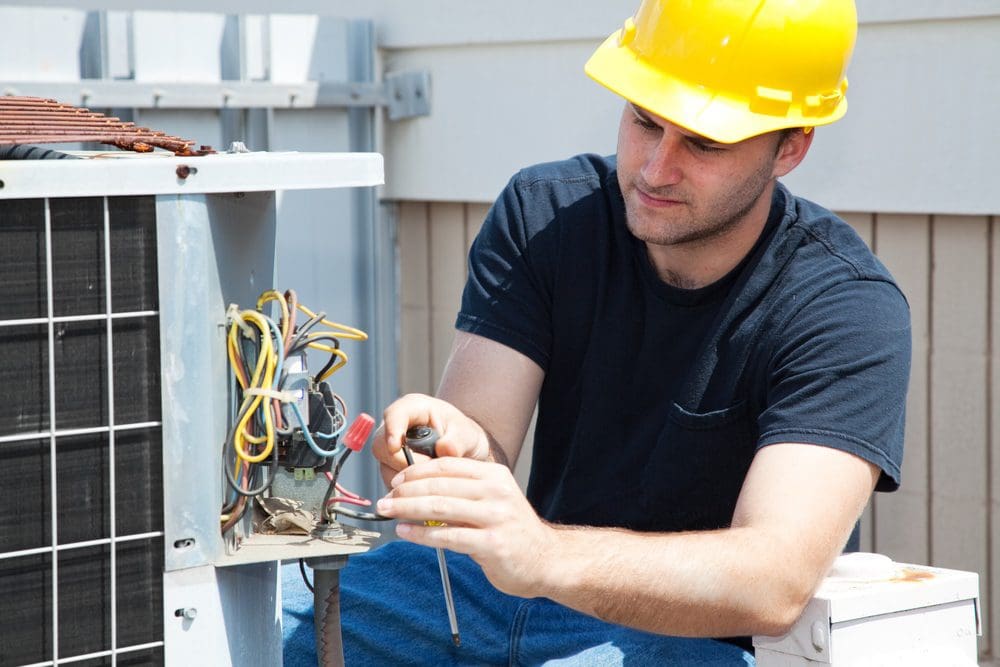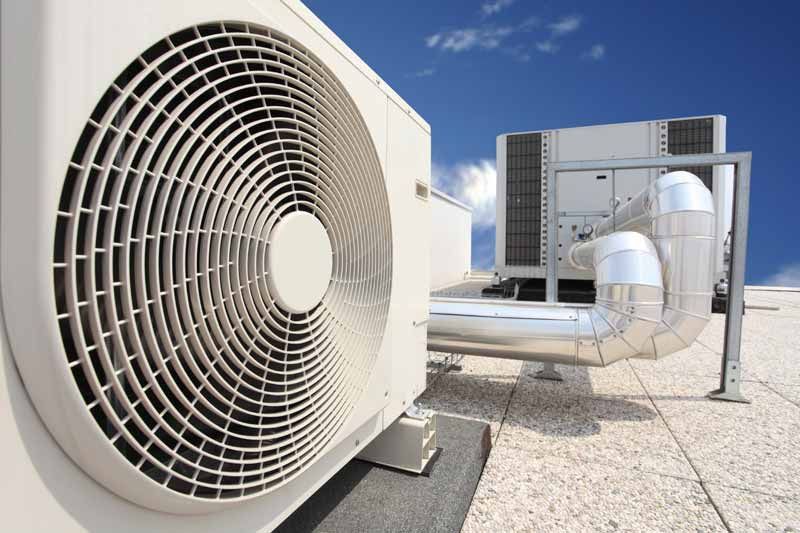Professional vs. DIY heat pump service: What You Need to Know
Professional vs. DIY heat pump service: What You Need to Know
Blog Article
How a Heat Pump and Furnace Work With Each Other to Enhance Your Home's Heating Effectiveness
Recognizing just how a warmth pump and heating system work with each other is important for house owners seeking effective home heating services. Each system has its toughness, supplying a well balanced strategy to home convenience. The heatpump masters modest temperature levels, while the heater delivers fast warmth during extreme cold. This synergy not only reduces energy costs but likewise boosts the life-span of both appliances. What aspects influence this collaboration, and exactly how can house owners optimize their benefits?
Understanding Warm Pumps: Just How They Function
Many people might be unfamiliar with their inner functions, warmth pumps play a vital role in contemporary heating systems. These gadgets run by moving warm from one location to another, utilizing the principles of thermodynamics. In colder months, a warmth pump extracts heat from the outside air, ground, or water, and transfers it indoors to warm up the living room. Conversely, throughout warmer months, it can reverse the process, working as an a/c unit by expelling warmth from inside to the outside.Heat pumps contain an evaporator, compressor, condenser, and expansion valve. The refrigerant within the system absorbs warm as it evaporates at low temperatures and stress. The compressor after that increases the stress and temperature level of the cooling agent, enabling it to release heat as it condenses. This effective procedure can considerably lower energy usage compared to standard home heating approaches, making heatpump a lasting choice for climate control in homes.
The Function of Heating Systems in Home Heating
Heaters play a crucial duty in home heating by providing a trustworthy resource of heat during the chillier months. They operate by creating warm with combustion or electrical resistance, distributing it throughout the home using ducts or glowing systems. The performance of a heater is typically gauged by its Annual Fuel Utilization Performance (AFUE) ranking, which suggests exactly how effectively the unit transforms gas right into heat.Furnaces can use numerous energy sources, including gas, propane, oil, or electrical energy, allowing house owners to choose one of the most suitable option for their needs. Unlike heatpump, which might have a hard time in extreme cool, heating systems preserve regular performance, guaranteeing that indoor temperature levels continue to be comfy despite exterior problems. Additionally, modern furnaces usually come equipped with advanced innovation, such as variable-speed blowers and clever thermostats, boosting their effectiveness and responsiveness. This convenience makes heaters a vital part in all-encompassing home heating techniques.

Advantages of Using Both Equipments With Each Other
Combining the strengths of both heating systems and warm pumps can bring about a more efficient and reliable home heating option. Utilizing both systems enables homeowners to make the most of the heatpump's power efficiency throughout milder temperatures while counting on the furnace for more extreme cold problems. This double technique can greatly minimize energy expenses, as warm pumps consume less power than standard home heating methods when temperature levels are moderate.Additionally, making use of both systems together can improve comfort degrees in the home. Warmth pumps can offer constant, even home heating, while furnaces can quickly increase ambient temperatures when needed. Furthermore, the combination of both systems can prolong the life expectancy of devices by reducing wear and tear on each unit, as they share the workload. Inevitably, homeowners can take pleasure in a balanced, affordable heating remedy that adjusts flawlessly to varying climate conditions, guaranteeing a warm and inviting home throughout the winter season.
How Heat Pumps and Furnaces Enhance Each Various Other
When house owners incorporate heat pumps and furnaces, they develop a corresponding heater that optimizes efficiency and comfort. Heatpump run by moving heat from the outside air or ground, making them extremely reliable in modest environments. They stand out throughout milder temperature levels, offering economical home heating. Alternatively, furnaces create heat through burning or electrical resistance, supplying strong, immediate warmth throughout extreme cold conditions.The combination of these two systems enables dynamic modifications based upon temperature fluctuations. During warmer months or milder winter months days, the heatpump can take the lead, saving energy and minimizing expenses. As temperature levels decrease, the heating system can flawlessly engage, guaranteeing consistent heat throughout the home. This harmony not just enhances power usage but likewise boosts the life-span of both systems, as each system runs within its optimal performance array. Together, they develop a well balanced environment that adjusts to differing climate demands.
Optimizing Efficiency: Tips for Homeowners
Property owners can enhance my explanation their home heating performance with several useful strategies. Developing a normal maintenance schedule, integrating clever thermostat modern technology, and implementing reliable insulation and sealing options are key steps. These actions not just boost convenience yet likewise minimize power expenses.
Normal Maintenance Arrange
To guarantee maximum home heating effectiveness, establishing a routine maintenance schedule is essential for any type of home. Home owners ought to prioritize routine examinations of both heatpump and furnaces to ascertain peak performance. This includes changing air filters every one to three months, as clogged filters can significantly reduce performance. Furthermore, organizing expert maintenance at least yearly allows service technicians to identify and attend to prospective issues before they intensify. House owners must likewise cleanse the heatpump's outside unit to stop particles buildup that can impede airflow. By sticking to a regular upkeep timetable, homeowners not just enhance their heating systems' performance however additionally prolong their life-span, causing higher convenience and decreased energy expenses throughout the cooler months.
Smart Thermostat Integration
Incorporating a clever thermostat right into a home heater can substantially enhance power effectiveness, especially as it enables accurate control over temperature level setups. These tools can find out the homeowner's routine and choices, immediately changing the temperature level to enhance comfort while reducing power use. As an example, they can decrease heating throughout times when the home is vacant, reducing unneeded intake. Numerous smart thermostats also supply real-time energy use information, enabling home owners to make educated choices regarding their heating habits. Additionally, remote gain access to by means of smart device apps permits users to change setups from anywhere, ensuring the home is warm upon return. In general, smart thermostat combination not only boosts convenience but considerably adds to power savings and effectiveness.
Insulation and Sealing Solutions
Smart thermostats play an essential function in energy effectiveness, yet their effectiveness can be considerably boosted by correct insulation and sealing options. Home owners must focus on insulating floors, attics, and walls to decrease heat loss. Top notch insulation materials, such as spray foam or fiberglass, can greatly boost thermal resistance. In addition, sealing gaps around windows, ducts, and doors prevents cold air seepage and warm retreat. Weatherstripping and caulking are effective methods for resolving these leaks - ductless mini splits. Routine inspections for air leakages, together with the usage of blower door examinations, can help determine trouble locations. By spending in insulation and sealing, homeowners can maximize the efficiency of their heating unit, eventually causing lowered power intake and reduced energy expenses
Common Misconceptions Regarding Warm Pumps and Furnaces
What mistaken beliefs border warmth pumps and furnaces? Numerous individuals wrongly believe that heat pumps are inefficient in colder environments. In truth, modern heatpump are created to operate efficiently also in low temperature levels, supplying trusted heating throughout wintertime. An additional common myth is that heating systems are always more reliable than heatpump. Nevertheless, this depends on the certain energy sources and performance ratings of the units concerned. Some may also assume that using both systems at the same time is unneeded, but actually, this mix can optimize heating effectiveness, especially during severe climate condition. In addition, people typically presume that heatpump require consistent upkeep, when in reality, they have similar upkeep requires to typical heating unit. By disproving these myths, property owners can make even more informed decisions concerning their heating choices, eventually leading to boosted comfort and energy performance in their homes.
Maintenance Considerations for Combined Solutions

Frequently Asked Inquiries
Can Warm Pumps Work Effectively in Extremely Cold Climates?
Heatpump can have a hard time in exceptionally chilly environments as a result of reduced efficiency and warmth extraction restrictions. Nonetheless, developments in innovation have resulted in versions developed for better efficiency in such problems, boosting their feasibility in harsh atmospheres.
Just How Lengthy Do Heat Pumps and Furnaces Normally Last?
Heatpump normally last 15 to two decades, while furnaces have a lifespan of 15 to 30 years. Routine maintenance can expand their durability, making sure effective operation and decreasing the demand for premature substitutes.

What Is the Typical Price of Setting Up Both Solutions?
The ordinary cost of installing both a heat pump and a furnace usually varies between $5,000 to $10,000 - heat pump replacement ooltewah tn. Aspects influencing this price consist of system size, setup complexity, and regional labor rates
Exist Tax Rewards for Utilizing Energy-Efficient Heating Equipments?
Numerous home owners ask about tax obligation motivations for energy-efficient home heating systems. Different federal and state programs usually use refunds or credit scores, urging the adoption of sustainable innovations to decrease energy intake and advertise ecological obligation.
Just how Do I Choose the Right Dimension Heatpump and Heating System?
Picking the best size heatpump and heater involves computing the home's square footage, taking into consideration insulation quality, and assessing regional climate. Consulting a professional can guarantee optimal system efficiency and energy effectiveness based upon certain requirements. heat pump replacement go to these guys ooltewah tn. Comprehending how a heat pump and furnace work with each other is crucial for homeowners looking for efficient heating options. In colder months, a warm pump extracts warm from the outside air, ground, or water, and transfers it inside to heat the living space. When home owners integrate warmth pumps and furnaces, they develop a complementary home heating system that maximizes effectiveness and convenience. Warmth pumps run by transferring warmth from the outdoors air or ground, making them very efficient in modest environments. Heat pumps can struggle in exceptionally chilly environments due to lowered performance and warm extraction restrictions
Report this page